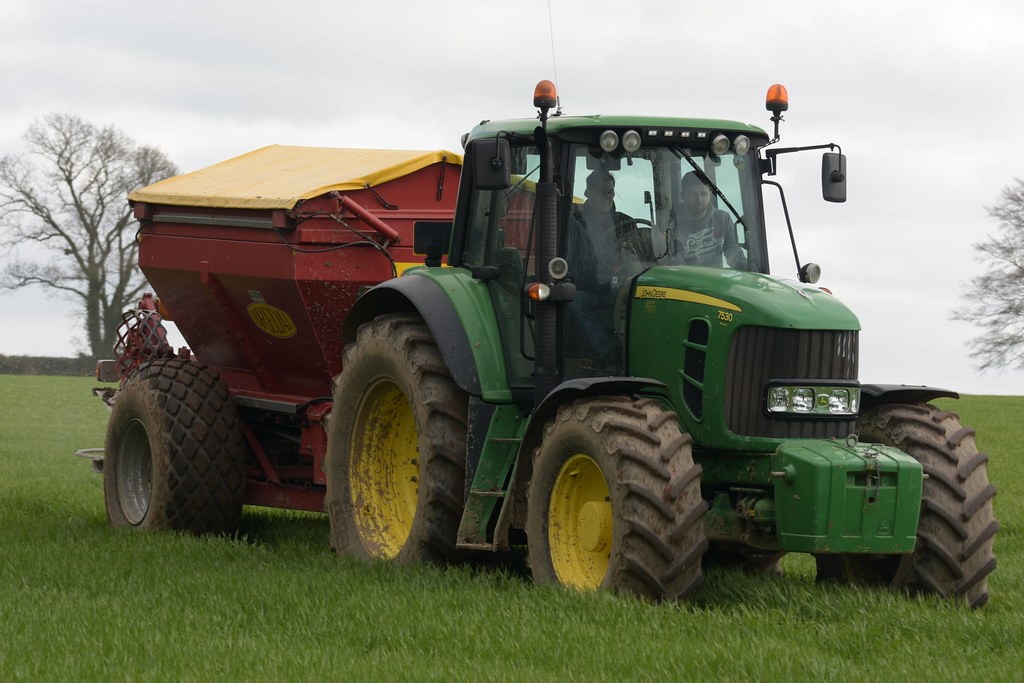Nutrient requirements to support 1st cut silage
Ensure soil analysis is carried out and the nutrient programme being applied is meeting the requirements. Typically, a large percentage of soil analysis taken on silage ground will be at index 1 and 2 for P and K.
Nitrogen is the key driver of grass. Grass swards with high levels of perennial rye grass will use N more efficiently than older swards.
Older, less productive swards will require 25% less N than figures outlined as they will be unable to utilise large volumes efficiently
A crop of grass silage (5t/ha of DM) will require 96 units/acre of Nitrogen. Grass silage will take up on average 2 units of N a day therefore apply N at least 50 days before cutting to ensure full N utilisation.
If early nitrogen has been applied, assume 25% of this is available for the silage crop and reduce N application rates accordingly
Phosphorus (P) and Potassium (K) are essential to maximise grass yields therefore adequate supply of these nutrients in the soil is critical. A crop of grass silage will remove approximately 4kg P and 25kg K /ton of grass DM.
Apply N, P & K when closing silage fields in late March. Where cattle slurry is applied, delay the top-up fertiliser applications for 1 week.
In wetter soil conditions fertilizer N can be split 50:50 for example 50% in late March/early April and the remainder two weeks later to reduce the risk of N losses.
Sulphur: Grass silage crops have a requirement of 8- 12 units/acre. S will improve grass DM yields and quality as it helps N to be used more efficiency. Apply S with main N split as N +S (e.g. CAN +S / Urea +S).
If slurry has been applied take this into consideration and reduce chemical applications accordingly – 1000 gals of good quality slurry will have approx. 6 units N, 5 units of P and 30 units of K. Use of low emission techniques will increase N by 3 units. It is advisable to carry out analysis of your slurry as the nutrient content can vary.
If silage ground received 3000gals of slurry at index 3 it would be sufficient to use straight Nitrogen with S (CAN or Protected Urea).
Table 1: First Cut silage requirements.
|
Soil Index |
N (units/ac) |
P (units/ac) |
K (units/ac) |
|
1 |
96 |
34 |
130 |
|
2 |
96 |
28 |
112 |
|
3 |
96 |
20 |
100 |
|
4 |
96 |
0 |
0 |
|
Opportunity for lime Where you have low grass covers, spring is an ideal time to consider applying lime where it is required. The lime will start to work once it is applied and washed into the soil, correcting soil pH immediately. The pH of the soil will have a large influence on soil nutrient availability so it’s vital to address. If grass covers are too high avoid applying lime until after harvest as lime particles present on grass may inhibit the ensiling process. Ensure lime is applied following slurry applications, otherwise delay applications for 3 – 6 months. In relation to Urea, lime can be applied a week after applying urea, if lime is spread first delay any urea applications for 3 – 6 months. |

Product Recommendations
- IFI Cut Sward (24/2.5/10 + S)
- Mastercrop Silage Elite (21/2/10 + S + Avail)
- Selnicut (20/2/12 + S + Selenium)
- 16/4/20 + S
- 15/3/20 + S
If you have any further questions on the topics covered please contact your local Glanbia Ireland representative.
First Published 30 March 2021
Tagged with: Dairy